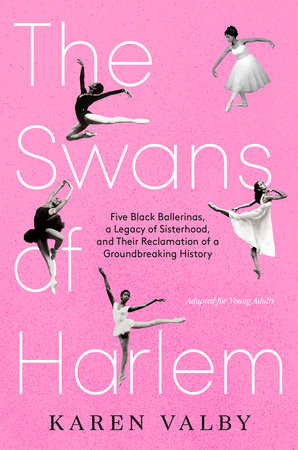Meet five amazing Black ballerinas from The Dance Theater of Harlem, including some of the founding members. They broke barriers and made history in the world of classical dance, at a time when racism shut out Black dancers from major dance companies.
A young adult adaptation of Karen Valby's adult non-fiction titleAt the peak of the civil rights movement, Lydia Abarca was the first ballerina in a Black ballet company to grace the cover of
Dance magazine. Alongside founding members Shelia Rohan and Gayle McKinney-Griffith and first-generation dancers Karlya Shelton and Marcia Sells, Abarca invited a bright light to shine on Black professional classical dancers. Grit, determination, and exquisite artistry propelled these swans of Harlem to dizzying heights as they performed around the world for audiences that included celebrities, dignitaries, and royalty.
Now, decades later, these trailblazing ballerinas and longtime friends are giving voice to their stories on- and offstage, reclaiming their past so that it is finally recorded, acknowledged, and lauded, never to be lost again.
* "This powerful account is part cultural history, part biography as it traces the formation, rise, and decline of DTH through the experiences of these five ballerinas, as well as their continued importance to dancers of color today....
this will appeal equally to fans of forgotten histories." —
Booklist, starred review
"
A poignant and gripping piece of little-known history." —
Kirkus Reviews
Karen Valby is the author of two books of nonfiction:
The Swans of Harlem and
Welcome to Utopia: Notes from a Small Town. A contributing editor for
Vanity Fair, she also writes for the
New York Times, O Magazine, Glamour, Fast Company, and
EW, where she spent fifteen years writing about culture
. She and her family live in Austin, Texas, where her daughters study dance at Ballet Afrique.
★ "This powerful account is part cultural history, part biography as it traces the formation, rise, and decline of DTH through the experiences of these five ballerinas, as well as their continued importance to dancers of color today....
this will appeal equally to fans of forgotten histories." —
Booklist, starred review
"
A poignant and gripping piece of little-known history." —
Kirkus Reviews
"
[A] thoughtfully crafted piece of narrative nonfiction." —
The Bulletin

















